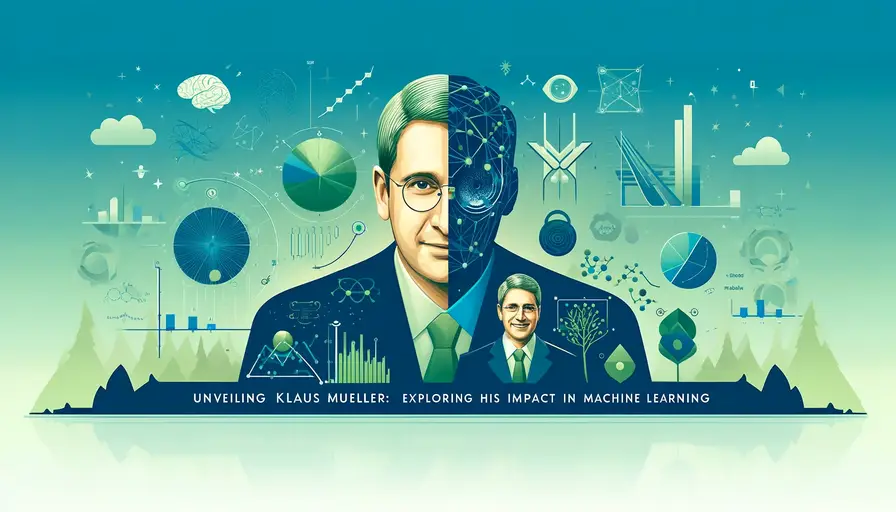
Decoding Decision Boundaries in Machine Learning: Explored

Understanding Decision Boundaries
Defining Decision Boundaries
In machine learning, decision boundaries are the surfaces that separate different classes in the feature space. These boundaries determine how the model classifies new data points based on the learned patterns from the training data. Understanding and visualizing these boundaries is crucial for interpreting how a model makes its decisions and identifying areas where it might misclassify data.
Decision boundaries can be linear or non-linear, depending on the complexity of the data and the model used. Linear models, such as logistic regression and linear support vector machines (SVM), create straight-line boundaries. Non-linear models, such as decision trees, random forests, and neural networks, can create more complex, curved boundaries that better capture intricate patterns in the data.
Visualizing decision boundaries helps in understanding the strengths and weaknesses of different models. For example, linear models might be sufficient for simple datasets, but more complex datasets with overlapping classes might require non-linear models to achieve better performance. Understanding these boundaries can guide the selection of appropriate models for specific tasks.
Importance of Decision Boundaries in Classification
Decision boundaries play a critical role in classification tasks, as they directly impact the model's accuracy and generalization ability. A well-defined decision boundary ensures that the model accurately distinguishes between classes, leading to higher precision and recall. Conversely, poorly defined boundaries can result in misclassifications and reduced model performance.
 The Advantages of Spiking Neural Networks for Machine Learning
The Advantages of Spiking Neural Networks for Machine LearningIn practice, decision boundaries help in identifying the regions of the feature space where the model is confident in its predictions versus areas where it might be uncertain. This information is valuable for improving model performance, as it allows for targeted improvements, such as collecting more data in regions of uncertainty or refining the model's parameters.
Moreover, visualizing decision boundaries can provide insights into the model's behavior and potential biases. For instance, if a model consistently misclassifies data points near the boundary, it might indicate that the boundary needs to be adjusted. Understanding these nuances helps in building more robust and reliable machine learning models.
Example: Visualizing Decision Boundaries with scikit-learn
import numpy as np
import matplotlib.pyplot as plt
from sklearn.datasets import make_classification
from sklearn.model_selection import train_test_split
from sklearn.svm import SVC
# Generate synthetic data
X, y = make_classification(n_samples=100, n_features=2, n_classes=2, n_clusters_per_class=1, random_state=42)
# Split the data into training and testing sets
X_train, X_test, y_train, y_test = train_test_split(X, y, test_size=0.2, random_state=42)
# Train a Support Vector Classifier
model = SVC(kernel='linear')
model.fit(X_train, y_train)
# Create a mesh grid for plotting decision boundaries
h = .02
x_min, x_max = X[:, 0].min() - 1, X[:, 0].max() + 1
y_min, y_max = X[:, 1].min() - 1, X[:, 1].max() + 1
xx, yy = np.meshgrid(np.arange(x_min, x_max, h), np.arange(y_min, y_max, h))
# Predict the class for each point in the mesh grid
Z = model.predict(np.c_[xx.ravel(), yy.ravel()])
Z = Z.reshape(xx.shape)
# Plot decision boundaries
plt.contourf(xx, yy, Z, alpha=0.8)
plt.scatter(X[:, 0], X[:, 1], c=y, edgecolors='k', marker='o')
plt.xlabel('Feature 1')
plt.ylabel('Feature 2')
plt.title('Decision Boundary of SVM')
plt.show()In this example, a Support Vector Classifier from scikit-learn is trained on a synthetic dataset, and the decision boundary is visualized. The plot shows how the linear SVM separates the two classes with a straight line, illustrating the decision boundary's role in classification.
Linear vs. Non-Linear Decision Boundaries
Linear Decision Boundaries
Linear decision boundaries are created by models that assume a linear relationship between the features and the target variable. These boundaries are straight lines (or hyperplanes in higher dimensions) that separate the feature space into distinct regions for different classes. Linear models are simple and computationally efficient, making them suitable for datasets where the classes are linearly separable.
 The Potential of Automated Machine Learning
The Potential of Automated Machine LearningModels such as logistic regression and linear SVM are commonly used for creating linear decision boundaries. These models are easy to interpret and provide insights into the relationship between features and the target variable. For instance, logistic regression coefficients indicate the impact of each feature on the probability of a particular class.
However, linear decision boundaries have limitations when dealing with complex datasets where the classes are not linearly separable. In such cases, linear models might underperform, leading to high bias and poor classification accuracy. Understanding the dataset's complexity is crucial for deciding whether a linear model is appropriate or if a non-linear model is needed.
Non-Linear Decision Boundaries
Non-linear decision boundaries are created by models that can capture complex relationships between features and the target variable. These boundaries are curved or irregular lines that better fit the data, allowing the model to distinguish between classes more accurately. Non-linear models are more flexible and can handle datasets with intricate patterns and overlapping classes.
Models such as decision trees, random forests, and neural networks are commonly used for creating non-linear decision boundaries. These models can adapt to the data's complexity, providing higher accuracy and better generalization. For example, decision trees split the feature space into regions based on feature values, creating non-linear boundaries that capture the data's structure.
 Using NLP and Machine Learning in R for Effective Data Analysis
Using NLP and Machine Learning in R for Effective Data AnalysisWhile non-linear models offer greater flexibility, they also come with increased computational complexity and a higher risk of overfitting. Overfitting occurs when the model captures noise in the training data, leading to poor performance on new, unseen data. Techniques such as cross-validation, pruning, and regularization are essential for managing overfitting and ensuring robust model performance.
Example: Comparing Linear and Non-Linear Models
import numpy as np
import matplotlib.pyplot as plt
from sklearn.datasets import make_classification
from sklearn.model_selection import train_test_split
from sklearn.svm import SVC
from sklearn.tree import DecisionTreeClassifier
# Generate synthetic data
X, y = make_classification(n_samples=100, n_features=2, n_classes=2, n_clusters_per_class=1, random_state=42)
# Split the data into training and testing sets
X_train, X_test, y_train, y_test = train_test_split(X, y, test_size=0.2, random_state=42)
# Train a linear SVM
linear_svm = SVC(kernel='linear')
linear_svm.fit(X_train, y_train)
# Train a Decision Tree
decision_tree = DecisionTreeClassifier()
decision_tree.fit(X_train, y_train)
# Create a mesh grid for plotting decision boundaries
h = .02
x_min, x_max = X[:, 0].min() - 1, X[:, 0].max() + 1
y_min, y_max = X[:, 1].min() - 1, X[:, 1].max() + 1
xx, yy = np.meshgrid(np.arange(x_min, x_max, h), np.arange(y_min, y_max, h))
# Plot decision boundaries for linear SVM
plt.subplot(1, 2, 1)
Z = linear_svm.predict(np.c_[xx.ravel(), yy.ravel()])
Z = Z.reshape(xx.shape)
plt.contourf(xx, yy, Z, alpha=0.8)
plt.scatter(X[:, 0], X[:, 1], c=y, edgecolors='k', marker='o')
plt.xlabel('Feature 1')
plt.ylabel('Feature 2')
plt.title('Linear SVM')
# Plot decision boundaries for Decision Tree
plt.subplot(1, 2, 2)
Z = decision_tree.predict(np.c_[xx.ravel(), yy.ravel()])
Z = Z.reshape(xx.shape)
plt.contourf(xx, yy, Z, alpha=0.8)
plt.scatter(X[:, 0], X[:, 1], c=y, edgecolors='k', marker='o')
plt.xlabel('Feature 1')
plt.ylabel('Feature 2')
plt.title('Decision Tree')
plt.tight_layout()
plt.show()In this example, a linear SVM and a Decision Tree from scikit-learn are trained on the same dataset. The decision boundaries are visualized, showing the straight-line boundary of the linear SVM and the more complex, non-linear boundary of the decision tree.
Advanced Techniques for Improving Decision Boundaries
Kernel Methods for SVM
Kernel methods enhance the capabilities of Support Vector Machines (SVM) by transforming the input features into a higher-dimensional space where a linear decision boundary can be applied. This transformation allows SVMs to handle non-linear relationships and create more flexible decision boundaries that better fit the data.
Common kernel functions include polynomial kernels, which can capture polynomial relationships, and radial basis function (RBF) kernels, which can handle complex, non-linear patterns. The choice of kernel function depends on the data's characteristics and the specific problem being addressed. Kernel methods enable SVMs to achieve higher accuracy on complex datasets without explicitly increasing the model's complexity.
 IBM's Machine Learning vs AI: Who Reigns Supreme?
IBM's Machine Learning vs AI: Who Reigns Supreme?Using kernel methods requires tuning hyperparameters, such as the degree of the polynomial kernel or the gamma parameter of the RBF kernel. Hyperparameter tuning can significantly impact the model's performance and should be done carefully using techniques like cross-validation. Properly tuned kernel methods can provide powerful and accurate decision boundaries for a wide range of classification tasks.
Ensemble Methods
Ensemble methods combine multiple models to create a stronger, more accurate predictor. Techniques such as bagging and boosting are commonly used to enhance decision boundaries and improve model performance. Bagging, or Bootstrap Aggregating, involves training multiple models on different subsets of the data and averaging their predictions. Random Forest is a popular bagging method that uses multiple decision trees to create a robust ensemble model.
Boosting techniques, such as Gradient Boosting Machines (GBMs) and AdaBoost, build models sequentially, with each new model focusing on the errors of the previous ones. This approach allows the ensemble to learn from mistakes and create a more accurate decision boundary. Boosting methods can handle complex, non-linear relationships and are known for their high performance in various machine learning tasks.
Ensemble methods provide several advantages, including reduced overfitting, improved generalization, and better handling of noisy data. They are particularly effective for datasets with complex patterns and interactions between features. By leveraging the strengths of multiple models, ensemble methods create more accurate and reliable decision boundaries.
 The Evolution of Machine Learning: A Brief History and Timeline
The Evolution of Machine Learning: A Brief History and TimelineExample: Using Kernel SVM and Random Forest
import numpy as np
import matplotlib.pyplot as plt
from sklearn.datasets import make_classification
from sklearn.model_selection import train_test_split
from sklearn.svm import SVC
from sklearn.ensemble import RandomForestClassifier
# Generate synthetic data
X, y = make_classification(n_samples=100, n_features=2, n_classes=2, n_clusters_per_class=1, random_state=42)
# Split the data into training and testing sets
X_train, X_test, y_train, y_test = train_test_split(X, y, test_size=0.2, random_state=42)
# Train a Kernel SVM with RBF kernel
kernel_svm = SVC(kernel='rbf', gamma=0.5)
kernel_svm.fit(X_train, y_train)
# Train a Random Forest
random_forest = RandomForestClassifier(n_estimators=100, random_state=42)
random_forest.fit(X_train, y_train)
# Create a mesh grid for plotting decision boundaries
h = .02
x_min, x_max = X[:, 0].min() - 1, X[:, 0].max() + 1
y_min, y_max = X[:, 1].min() - 1, X[:, 1].max() + 1
xx, yy = np.meshgrid(np.arange(x_min, x_max, h), np.arange(y_min, y_max, h))
# Plot decision boundaries for Kernel SVM
plt.subplot(1, 2, 1)
Z = kernel_svm.predict(np.c_[xx.ravel(), yy.ravel()])
Z = Z.reshape(xx.shape)
plt.contourf(xx, yy, Z, alpha=0.8)
plt.scatter(X[:, 0], X[:, 1], c=y, edgecolors='k', marker='o')
plt.xlabel('Feature 1')
plt.ylabel('Feature 2')
plt.title('Kernel SVM with RBF Kernel')
# Plot decision boundaries for Random Forest
plt.subplot(1, 2, 2)
Z = random_forest.predict(np.c_[xx.ravel(), yy.ravel()])
Z = Z.reshape(xx.shape)
plt.contourf(xx, yy, Z, alpha=0.8)
plt.scatter(X[:, 0], X[:, 1], c=y, edgecolors='k', marker='o')
plt.xlabel('Feature 1')
plt.ylabel('Feature 2')
plt.title('Random Forest')
plt.tight_layout()
plt.show()In this example, a Kernel SVM with an RBF kernel and a Random Forest from scikit-learn are trained on a synthetic dataset. The decision boundaries are visualized, showing the flexibility of the RBF kernel and the ensemble power of the Random Forest.
Practical Applications and Challenges
Real-World Applications of Decision Boundaries
Decision boundaries are crucial in various real-world applications where classification is essential. In healthcare, decision boundaries help in diagnosing diseases by classifying patients based on their symptoms and medical history. Models with well-defined decision boundaries can differentiate between healthy and at-risk patients, aiding in early intervention and treatment.
In finance, decision boundaries are used to detect fraudulent transactions. Machine learning models classify transactions as fraudulent or legitimate based on patterns and features such as transaction amount, location, and time. Accurate decision boundaries help in minimizing false positives and negatives, ensuring that legitimate transactions are not flagged while fraudulent ones are caught.
In marketing, decision boundaries assist in customer segmentation by classifying customers into different groups based on their behavior and preferences. This segmentation enables personalized marketing strategies and improves customer engagement. By understanding the decision boundaries, businesses can better target their marketing efforts and enhance customer satisfaction.
 Machine Learning: A Comprehensive Analysis of Data-driven Learning
Machine Learning: A Comprehensive Analysis of Data-driven LearningChallenges in Defining Decision Boundaries
Defining decision boundaries accurately is challenging due to various factors such as data complexity, noise, and the choice of model. Complex datasets with overlapping classes require sophisticated models that can capture non-linear relationships. However, these models are prone to overfitting, where they learn noise in the training data, leading to poor generalization on new data.
Noise in the data, such as outliers and errors, can distort decision boundaries and affect model performance. Handling noise requires careful data preprocessing, outlier detection, and robust model selection. Ensuring high-quality data is crucial for defining accurate and reliable decision boundaries.
Choosing the right model and hyperparameters is another challenge. Different models have different capabilities, and selecting the appropriate one depends on the data and the specific problem. Hyperparameter tuning is essential to optimize the model's performance, but it can be computationally intensive and time-consuming. Using techniques like cross-validation and automated tuning tools can help in finding the best model and parameters.
Example: Handling Noisy Data
import numpy as np
import matplotlib.pyplot as plt
from sklearn.datasets import make_classification
from sklearn.model_selection import train_test_split
from sklearn.ensemble import RandomForestClassifier
from sklearn.preprocessing import StandardScaler
# Generate synthetic data with noise
X, y = make_classification(n_samples=100, n_features=2, n_classes=2, n_clusters_per_class=1, flip_y=0.1, random_state=42)
# Standardize the data
scaler = StandardScaler()
X = scaler.fit_transform(X)
# Split the data into training and testing sets
X_train, X_test, y_train, y_test = train_test_split(X, y, test_size=0.2, random_state=42)
# Train a Random Forest
model = RandomForestClassifier(n_estimators=100, random_state=42)
model.fit(X_train, y_train)
# Create a mesh grid for plotting decision boundaries
h = .02
x_min, x_max = X[:, 0].min() - 1, X[:, 0].max() + 1
y_min, y_max = X[:, 1].min() - 1, X[:, 1].max() + 1
xx, yy = np.meshgrid(np.arange(x_min, x_max, h), np.arange(y_min, y_max, h))
# Plot decision boundaries for Random Forest
Z = model.predict(np.c_[xx.ravel(), yy.ravel()])
Z = Z.reshape(xx.shape)
plt.contourf(xx, yy, Z, alpha=0.8)
plt.scatter(X[:, 0], X[:, 1], c=y, edgecolors='k', marker='o')
plt.xlabel('Feature 1')
plt.ylabel('Feature 2')
plt.title('Random Forest with Noisy Data')
plt.show()In this example, a Random Forest from scikit-learn is trained on a noisy dataset. The decision boundary is visualized, illustrating how the model handles noise and defines boundaries despite the data's complexity.
Future Directions in Decision Boundary Research
Future research in decision boundaries focuses on developing more robust and interpretable models that can handle complex and noisy data effectively. Advances in explainable AI (XAI) aim to provide better insights into how models define decision boundaries, helping to build trust and transparency in machine learning applications. Tools like LIME and SHAP are being developed to explain model predictions and decision boundaries.
Another promising direction is the integration of unsupervised learning with decision boundary research. Combining clustering algorithms with supervised models can help in identifying natural groupings in the data and defining more accurate decision boundaries. This approach is particularly useful for tasks like anomaly detection and semi-supervised learning.
The use of transfer learning to improve decision boundaries across different domains is also gaining attention. By leveraging pre-trained models and transferring knowledge from one domain to another, researchers can build models that generalize better and define more accurate decision boundaries with limited data. This technique is especially valuable in fields like healthcare and finance, where labeled data can be scarce.
Conclusion: Enhancing Decision Boundary Understanding
Understanding and defining decision boundaries is crucial for developing accurate and reliable machine learning models. Decision boundaries determine how models classify data, impacting their performance and generalization capabilities. By exploring different types of decision boundaries, such as linear and non-linear, and using advanced techniques like kernel methods and ensemble learning, practitioners can build models that effectively handle complex and noisy data.
Visualizing decision boundaries provides valuable insights into model behavior and helps identify areas for improvement. Techniques like cross-validation and hyperparameter tuning ensure that models are robust and perform well on new data. Future research in explainable AI, unsupervised learning, and transfer learning promises to enhance our understanding and definition of decision boundaries, leading to more transparent and effective machine learning applications.
By leveraging the power of decision boundaries, machine learning practitioners can develop models that accurately classify data, improve decision-making, and drive innovation across various fields. The continued advancement in this area will undoubtedly lead to more robust, interpretable, and reliable machine learning solutions.
If you want to read more articles similar to Decoding Decision Boundaries in Machine Learning: Explored, you can visit the Artificial Intelligence category.






You Must Read